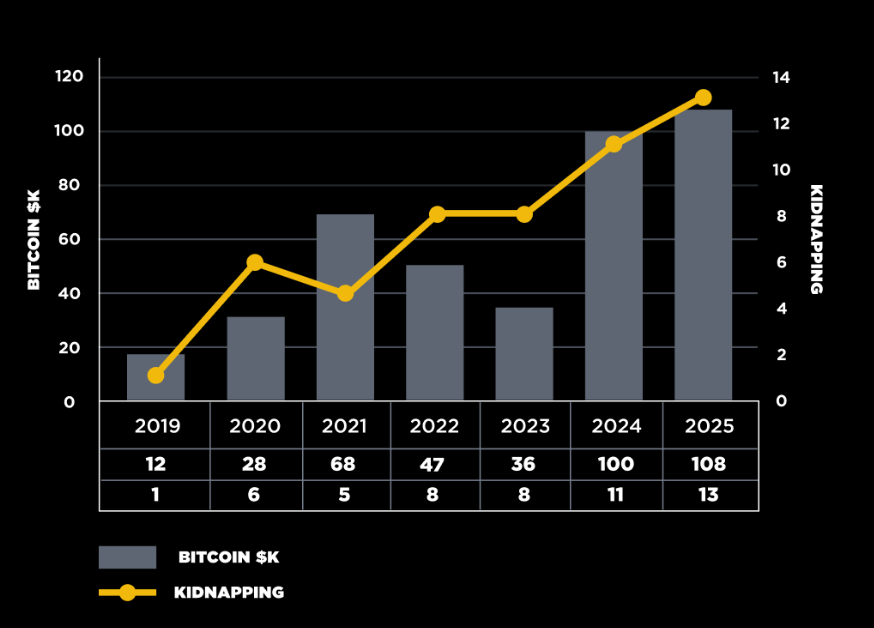According to the latest Binance report, the US saw the most code-inducing cases since 2019, despite the recent rise in cases in France.
Europe still has the most crypto-inducing cases, with 59 cases in six years. North America saw 48 cases in the same period.
The rise in cryptographic tricks increases as criminals pose physical threats to steal digital assets
Crypto is well known for its popularity for hacking and digital malicious exploits, but criminals are now finding new ways to steal digital assets through physical threats.
However, these attacks are not limited to a single territory. North America and Europe continue to be the most vulnerable regions of such incidents, but other regions have seen an increase in attacks.
There have been 62 cases of code induction and physical threats recorded across the Asia continent since 2019. Most of these cases took place in Southeast Asian countries.
France has recently seen six such incidents, three of which occurred in 2025 alone. In many cases, attackers target individuals who are thought to own or manage digital assets. Victims include crypto executives, traders, exchange staff and business owners.
In some cases, criminals have chased suspects of family members and tourists carrying valuable wallet qualifications.
The rise in physical threats of codes
One of the most serious incidents of this year happened in January. David Balland, co-founder of Ledger, and his wife, were accused of from their French residence. The incident attracted a wide range of attention from both industry and law enforcement.
Another recent attempt was made in Paris earlier this month. The armed man reportedly tried to abduct the daughter and grandchild of the CEO of France’s Crypto Exchange Paimium.
Meanwhile, in New York, police arrested 37-year-old John Waltz after discovering that Italian tourists had been caught and abused in a high-end Manhattan apartment for weeks.
Binance highlights a clear pattern between crypto prices and physical crime. Bitcoin has reached an all-time high this year, and has also climbed attacks, including physical threats.

So far, in 2025, at least 15 such cases have been documented. It often includes a Bitcoin ransom request.
As digital assets rise in value, attackers appear willing to move offline to use violence and threats to access funds.
Disclaimer
In compliance with Trust Project guidelines, Beincrypto is committed to reporting without bias and transparent. This news article is intended to provide accurate and timely information. However, we recommend that readers independently verify the facts and consult with experts before making decisions based on this content. Please note that our terms and conditions, privacy policy and disclaimer have been updated.

